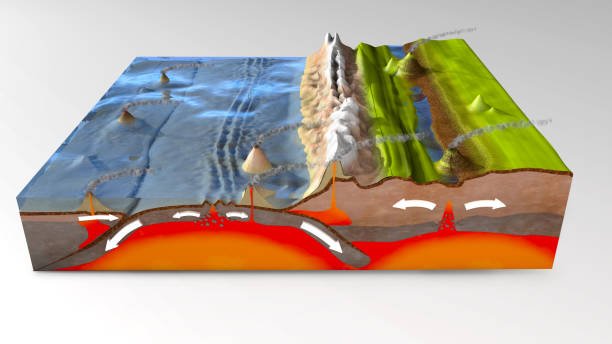JOIN OUR WHATSAPP GROUP. CLICK HERE
What do we call it when two Tectonic Plates move towards each other
What do we call it when two Tectonic Plates move towards each other Tectonic plates are a collection of parts that make up the lithosphere of the Earth, which is made up of the crust and upper mantle.
List of Major Tectonic Plate
Do you know that there are seven major tectonic plates on planet earth? These tectonic plates are known by the following names:
- African tectonic plate,
- Antarctic tectonic plate,
- Eurasian tectonic plate,
- Indo-Australian tectonic plate,
- North American tectonic plate,
- Pacific tectonic plate
- South American tectonic plate.
When these tectonic plates move towards each other and collide, they create what is called convergent boundaries, or compressional or destructive boundaries.

Tectonic Plate Video Lesson
What are the different types of plate tectonic boundaries?
A divergent boundary occurs when two tectonic plates move away from each other. Along these boundaries, earthquakes are common and magma (molten rock) rises from the Earth’s mantle to the surface, solidifying to create new oceanic crust. The Mid-Atlantic Ridge is an example of divergent plate boundaries.
When two plates come together, it is known as a convergent boundary. The impact of the colliding plates can cause the edges of one or both plates to buckle up into a mountain ranges or one of the plates may bend down into a deep seafloor trench. A chain of volcanoes often forms parallel to convergent plate boundaries and powerful earthquakes are common along these boundaries. The Pacific Ring of Fire is an example of a convergent plate boundary.
At convergent plate boundaries, oceanic crust is often forced down into the mantle where it begins to melt. Magma rises into and through the other plate, solidifying into granite, the rock that makes up the continents. Thus, at convergent boundaries, continental crust is created and oceanic crust is destroyed.
Two plates sliding past each other forms a transform plate boundary. One of the most famous transform plate boundaries occurs at the San Andreas fault zone, which extends underwater. Natural or human-made structures that cross a transform boundary are offset — split into pieces and carried in opposite directions. Rocks that line the boundary are pulverized as the plates grind along, creating a linear fault valley or undersea canyon. Earthquakes are common along these faults. In contrast to convergent and divergent boundaries, crust is cracked and broken at transform margins, but is not created or destroyed.
How to Pass Geography Grade 10 with distinctions
One of the most significant accomplishments in your academic career is passing matric. It provides access to a wide range of post secondary options and employment possibilities. Use our best study advice to complete your matriculation, and you’ll succeed with flying colors.
READ => How to get your matric results step by step
- Attend class
- Ask questions
- Make notes
- Study
- Practise
- Study groups
- Extra class
- Motivation
- Complete assessments
- Prepare for the Exams in due time
Download Past Exam Papers & Memo per Province
- Department of Basic Education Grade 9 Exams
- Eastern Cape Papers and Memorandum
- Free State Papers and Memorandum
- Gauteng Papers and Memorandum
- KwaZulu-Natal Papers and Memorandum
- Limpopo Papers and Memorandum
- Mpumalanga Papers and Memorandum
- Northern Cape Papers and Memorandum
- North West Papers and Memorandum
- Western Cape Papers and Memorandum
JOIN OUR TELEGRAM CHANNEL. CLICK HERE

Be the first to comment